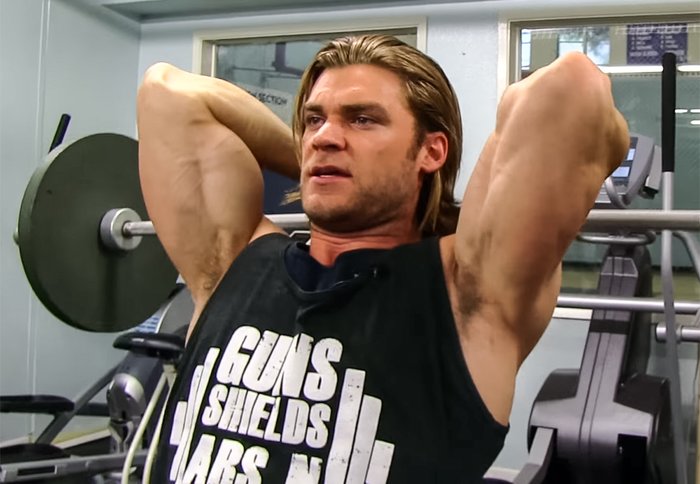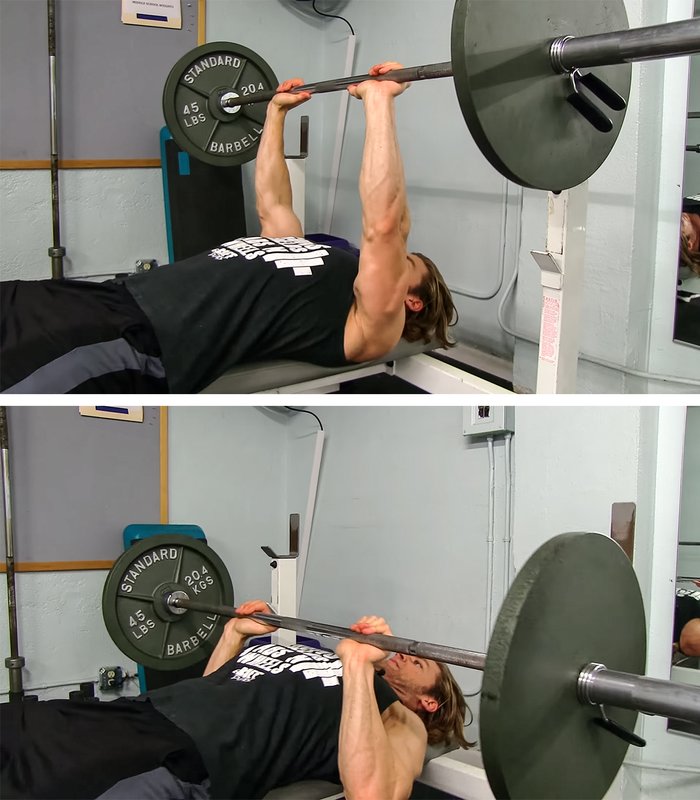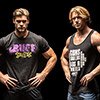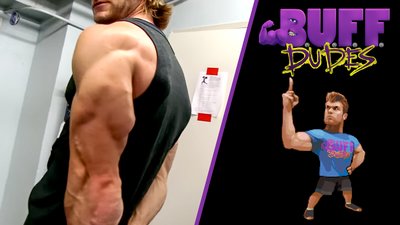There are all kinds of form blunders you hear about when training triceps, but three of them are so egregious that it's time to call them out—and explain how to fix them!
1. Focus on Full-Range-Of-Motion Training
This item may sound as boring as your mom constantly reminding you to brush your teeth, but it's one that trainees continue to get wrong. The culprit is typically going too heavy, making it difficult to control the weight for the duration of the full range of motion (ROM). As a result, you end up doing partial reps.
Partial-rep training has its place in bodybuilding, but as an adjunct to full-range training, not instead of it. If you skip the bottom 20 percent of the lockout phase or the top third of the ROM, you'll never build strength over those arcs. Over time, you start building strength only in the middle of the lift. That may make your triceps relatively useless when you're bench pressing a PR and can't make the lockout, or when you're doing close-grip benches and you can't get the bar off your chest. There's a reason they say partial reps equal partial growth, and we can't understate the importance of making full-ROM training an anchor in your workouts.
Aside from warming up well and practicing mobility drills to aid flexibility around a joint, you should first understand a movement's complete ROM. Second, remember to think about what you're doing during a set rather than allowing your mind to wander. Feel a deep stretch in your triceps. Allow the bar to go well behind your head in seated French presses, for example, to ensure all muscle fibers fire once you commence the concentric motion. Apply those same thoughts to press-downs, overhead extensions, and other triceps moves.
2. Vary Your Angles
You've probably heard you should train your chest from various angles, performing presses from flat bench, incline, and decline benches to hit the pecs more thoroughly. That's the way most muscle groups should be trained—especially one like triceps, with its multiple heads. But for some reason, triceps movements (not to mention biceps) are oftentimes done in an all-too-similar fashion.
When doing press-downs, kick-backs, and to some degree even various kinds of dips, your upper arms and elbows stay fairly tight to your sides. That's a particularly good way to train the lateral head, but the stimulus on the other side of the horseshoe—the long head—is fairly weak. To target the long head, raise your arms overhead. Here, a little knowledge of science can benefit you.
The long head is best engaged when your arms are overhead. That's because the long head originates on the rear portion of your shoulder blade and attaches to your forearm, helping to extend your elbow. The other two triceps heads attach on the humerus (upper arm bone) and help to extend the forearm. This is important because the long head is fully stretched only when your arm is raised overhead. For a muscle to undergo a strong contraction, it must be completely stretched first. So when your arms are overhead, that's when you're targeting the long head. If you want the long head to grow, start doing overhead triceps movements.
Skullcrushers, a family of moves in which your upper arms are about perpendicular to your torso, represent an opportunity to include both the long and lateral heads. So do a number of multijoint triceps exercises. Which leads us to...

Seated French Press
3. Emphasize Multijoint Movements
While the triceps can be completely trained with single-joint movements, why limit yourself? That would be akin to working chest with just fly and cross-over motions. You could, but it wouldn't be the best way to train!
So what is? This may sound like familiar advice, but start your routine with multijoint exercises, those in which multiple sets of joints are working in unison. Using legs as an example, think about how much you can squat versus your max weight on leg extensions. The multijoint movement allows you to use a far greater load, which in turns delivers a greater anabolic hormone stimulus.

Close-grip Bench Press
For triceps, that means including close-grip benches, weighted bench and parallel-bar dips, and triceps-dip-machine movements in which you can load up some serious weight.
We've always been a fan of doing those movements early in the workout so you can push more weight. That's an important key to building not just a stronger muscle, but a bigger one.

